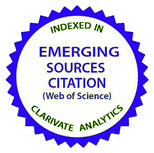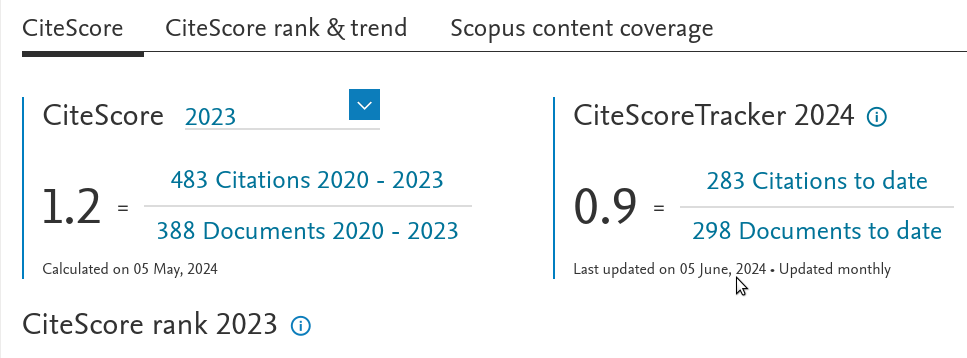Гауссове наближення в оптимізаційній задачі моделі гри у меншості
DOI:
https://doi.org/10.15407/ujpe56.1.80Ключові слова:
-Анотація
Методами статистичної фізики досліджено оптимізаційну задачу у відомій моделі гри у меншості. Оптимізаційну задачу зведено до вивчення основного стану реплічного гамільтоніана з випадковими параметрами деякої ефективної системи з неперервним спіном. Використовуючи ідеї центральних граничних теорем теорії ймовірностей, отримано представлення для функції розподілу параметрів гамільтоніана і виконано перехід до гауссового розподілу у випадку великих P. Застосовуючи наближення 1RSB та 2RSB в методі реплік, отримано залежність мінімуму досліджуваної величини від параметра α. Показано, що в області застосовності запропонований метод дає менші значення мінімуму, ніж в оригінальних
роботах.
Посилання
W. Kinzel, in Proceed. Int. Sympos. on Synergetics, 1985, edited by H. Haken (Springer, Berlin, 1986), p. 107.
https://doi.org/10.1007/978-3-642-70795-7_7
I.Ya. Korenblit and E.F. Shender, Uspekhi Fiz. Nauk 157, 2 (1989).
https://doi.org/10.3367/UFNr.0157.198902b.0267
H. Nishimori, Statistical Physics of Spin Glasses and Information Processing. An Introduction (Clarendon Press, Oxford, 2001).
https://doi.org/10.1093/acprof:oso/9780198509417.001.0001
R.N. Mantegna and H.E. Stanley, An Introduction to Econophysics: Correlations and Complexity in Finance (Cambridge Univ. Press, Cambridge, 1999).
https://doi.org/10.1017/CBO9780511755767
A. De Martino and M. Marsili, Preprint (physics/0606107), (2006).
D. Challet and Y.C. Zhang, Physica A 246, 407 (1997).
https://doi.org/10.1016/S0378-4371(97)00419-6
D. Challet and Y.C. Zhang, Physica A 256, 514 (1998).
https://doi.org/10.1016/S0378-4371(98)00260-X
R. Savit, R. Manuca, and R. Riolo, Phys. Rev. Lett. 82, 2203 (1999).
https://doi.org/10.1103/PhysRevLett.82.2203
D. Challet, M. Marsili, and R. Zecchina, Phys. Rev. Lett. 84, 1824 (2000) (cond-mat/9904392).
https://doi.org/10.1103/PhysRevLett.84.1824
Y.C. Zhang, Physica A 30, 269 (1999), (condmat/9901243).
https://doi.org/10.1016/S0378-4371(99)00077-1
M. Marsili, D. Challet, and R. Zecchina, Physica A 280, 522 (2000), (cond-mat/9908480).
https://doi.org/10.1016/S0378-4371(99)00610-X
A. De Martino and M. Marsili, J. Phys. A: Math. Gen. 34, 2525 (2001), (сond-mat/0007397).
https://doi.org/10.1088/0305-4470/34/12/301
H. Moulin, Game Theory with Examples from Mathematical Economics (Mir, Moscow, 1972) (in Russian).
V. Yanishevsky, Zh. Fiz. Dosl., 13, 3602 (2009).
https://doi.org/10.30970/jps.13.3602
M. Mezard, G. Parisi, and M.A. Virasoro, Spin Glass Theory and Beyond (World Scientific, Singapore, 1987).
R.P. Feynman, Statistical Mechanics (Addison-Wesley, Reading, 1972).
W. Feller, An Introduction to Probability Theory and Its Applications, (Wiley, New York, 1970).
J.R.L. de Almeida and D.J. Thouless, J. Phys. A 11, 983 (1978).
https://doi.org/10.1088/0305-4470/11/5/028
P. Lancaster, Theory of Matrices (Academic Press, New York, 1969).
A. Crisanti, D.J. Amit, and H. Gutfreund, Europhys. Lett. 2, 337 (1986).
https://doi.org/10.1209/0295-5075/2/4/012
H. Steffan and R. K¨uhn, (cond-mat/9404036v1) (1994)
S.K. Ghatak and D. Sherrington, J. Phys. C 10, 3149 (1977).
https://doi.org/10.1088/0022-3719/10/16/023
G.R. Schreiber, (cond-mat/9612189v2) (1999).
F.A. da Costa and J.M. de Ara'ujo, cond-mat/0005029v1 (2000).
##submission.downloads##
Опубліковано
Як цитувати
Номер
Розділ
Ліцензія
Ліцензійний Договір
на використання Твору
м. Київ, Україна
Відповідальний автор та співавтори (надалі іменовані як Автор(и)) статті, яку він (вони) подають до Українського фізичного журналу, (надалі іменована як Твір) з одного боку та Інститут теоретичної фізики імені М.М. Боголюбова НАН України в особі директора (надалі – Видавець) з іншого боку уклали даний Договір про таке:
1. Предмет договору.
Автор(и) надає(ють) Видавцю безоплатно невиключні права на використання Твору (наукового, технічного або іншого характеру) на умовах, визначених цим Договором.
2. Способи використання Твору.
2.1. Автор(и) надає(ють) Видавцю право на використання Твору таким чином:
2.1.1. Використовувати Твір шляхом його видання в Українському фізичному журналі (далі – Видання) мовою оригіналу та в перекладі на англійську (погоджений Автором(ами) і Видавцем примірник Твору, прийнятого до друку, є невід’ємною частиною Ліцензійного договору).
2.1.2. Переробляти, адаптувати або іншим чином змінювати Твір за погодженням з Автором(ами).
2.1.3. Перекладати Твір у випадку, коли Твір викладений іншою мовою, ніж мова, якою передбачена публікація у Виданні.
2.2. Якщо Автор(и) виявить(лять) бажання використовувати Твір в інший спосіб, як то публікувати перекладену версію Твору (окрім випадку, зазначеного в п. 2.1.3 цього Договору); розміщувати повністю або частково в мережі Інтернет; публікувати Твір в інших, у тому числі іноземних, виданнях; включати Твір як складову частину інших збірників, антологій, енциклопедій тощо, то Автор(и) мають отримати на це письмовий дозвіл від Видавця.
3. Територія використання.
Автор(и) надає(ють) Видавцю право на використання Твору способами, зазначеними у п.п. 2.1.1–2.1.3 цього Договору, на території України, а також право на розповсюдження Твору як невід’ємної складової частини Видання на території України та інших країн шляхом передплати, продажу та безоплатної передачі третій стороні.
4. Строк, на який надаються права.
4.1. Договір є чинним з дати підписання та діє протягом усього часу функціонування Видання.
5. Застереження.
5.1. Автор(и) заявляє(ють), що:
– він/вона є автором (співавтором) Твору;
– авторські права на даний Твір не передані іншій стороні;
– даний Твір не був раніше опублікований і не буде опублікований у будь-якому іншому виданні до публікації його Видавцем (див. також п. 2.2);
– Автор(и) не порушив(ли) права інтелектуальної власності інших осіб. Якщо у Творі наведені матеріали інших осіб за виключенням випадків цитування в обсязі, виправданому науковим, інформаційним або критичним характером Твору, використання таких матеріалів здійснене Автором(ами) з дотриманням норм міжнародного законодавства і законодавства України.
6. Реквізити і підписи сторін.
Видавець: Інститут теоретичної фізики імені М.М. Боголюбова НАН України.
Адреса: м. Київ, вул. Метрологічна 14-б.
Автор: Електронний підпис від імені та за погодження всіх співавторів.













